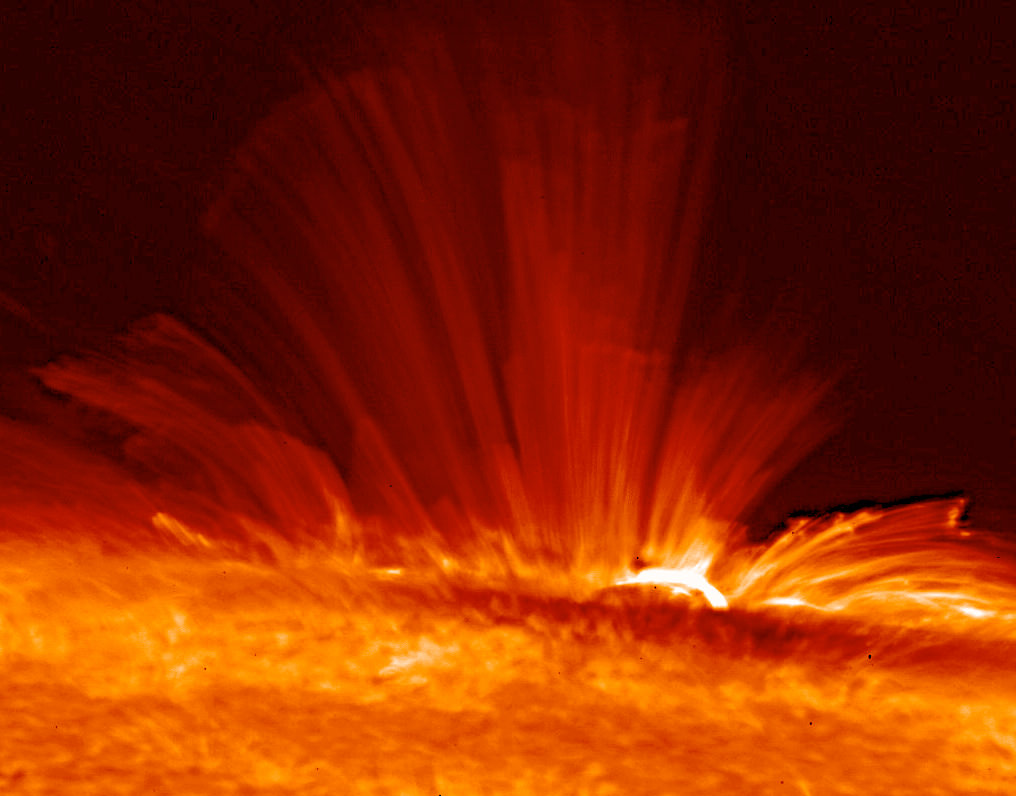[/caption]
The Sun is the hottest place in the Solar System. The surface of the Sun is a mere 5,800 Kelvin, but down at the core of the Sun, the temperatures reach 15 million Kelvin. What’s going on, why is the Sun hot?
The Sun is just a big plasma ball of hydrogen, held together by the mutual gravity of all its mass. This enormous mass pulls inward, trying to compress the Sun down. It’s the same reason why the Earth and the rest of the planets are spheres. As the pull of gravity compresses the gas inside the Sun together, it increases the temperature and pressure in the core.
If you could travel down into the Sun, you’d reach a point where the pressure and temperature are enough that nuclear fusion is able to take place. This is the process where protons are merged together into atoms of helium. It can only happen in hot temperatures, and under incredible pressures. But the process of fusion gives off more energy than it uses. So once it gets going, each fusion reaction gives off gamma radiation. It’s the radiation pressure of this light created in the core of the Sun that actually stops it from compressing any more.
The Sun is actually in perfect balance. Gravity is trying to squeeze it together into a little ball, but this creates the right conditions for fusion. The fusion releases radiation, and it’s this radiation that pushes back against the gravity, keeping the Sun as a sphere.
We have written many articles about the Sun for Universe Today. Here’s an article about how hot the surface of the Sun is, and here’s an article about the parts of the Sun.
If you’d like more information on the Sun, check out NASA’s Solar System Exploration Guide on the Sun, and here’s a link to the SOHO mission homepage, which has the latest images from the Sun.
We have also recorded an episode of Astronomy Cast about the Sun. Check it out, Episode 30: The Sun, Spots and All.

